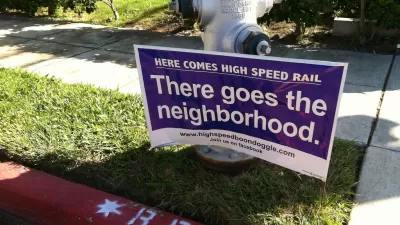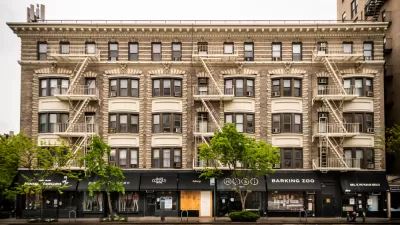As urban centers start making better sense for a digital economy, NIMBY policies might be worth re-examining. In addition to driving up the cost of housing, they may compound inefficiencies and slow down the economy.

An article from the Economist dives into the study released in March estimating the cost of sprawl to the U.S. economy at $1 trillion a year. In fact, according to the article, "[l]ifting all the barriers to urban growth in America could raise the country’s GDP by between 6.5% and 13.5%, or by about $1 trillion-2 trillion. It is difficult to think of many other policies that would yield anything like that."
An upswing in the fortunes of American cities has been widely noted, along with exploding land values in economic centers. As the article notes, "In the 20th century, tumbling transport costs weakened the gravitational pull of the city; in the 21st, the digital revolution has restored it. Knowledge-intensive industries such as technology and finance thrive on the clustering of workers who share ideas and expertise."
In spite of this, new construction is comparatively scarce. A cocktail of outdated zoning and NIMBYish objections, according to the article, is to blame for blockages in urban land maximization. While acknowledging the political difficulty involved, the article points to a two-pronged solution:
- City planning decisions should be made at the city level, from top down, to minimize objections from specific localities.
- Governments should levy higher land taxes, creating an incentive to put land to better (economic) use.
FULL STORY: Space and the city

Montreal Mall to Become 6,000 Housing Units
Place Versailles will be transformed into a mixed-use complex over the next 25 years.

Planetizen Federal Action Tracker
A weekly monitor of how Trump’s orders and actions are impacting planners and planning in America.

DARTSpace Platform Streamlines Dallas TOD Application Process
The Dallas transit agency hopes a shorter permitting timeline will boost transit-oriented development around rail stations.

Study: 4% of Truckers Lack a Valid Commercial License
Over 56% of inspected trucks had other violations.

Chicago Judge Orders Thousands of Accessible Ped Signals
Only 3% of the city's crossing signals are currently accessible to blind pedestrians.

Philadelphia Swaps Car Lanes for Bikeways in Unanimous Vote
The project will transform one of the handful of streets responsible for 80% of the city’s major crashes.
Urban Design for Planners 1: Software Tools
This six-course series explores essential urban design concepts using open source software and equips planners with the tools they need to participate fully in the urban design process.
Planning for Universal Design
Learn the tools for implementing Universal Design in planning regulations.
City of Mt Shasta
City of Camden Redevelopment Agency
City of Astoria
Transportation Research & Education Center (TREC) at Portland State University
US High Speed Rail Association
City of Camden Redevelopment Agency
Municipality of Princeton (NJ)





























